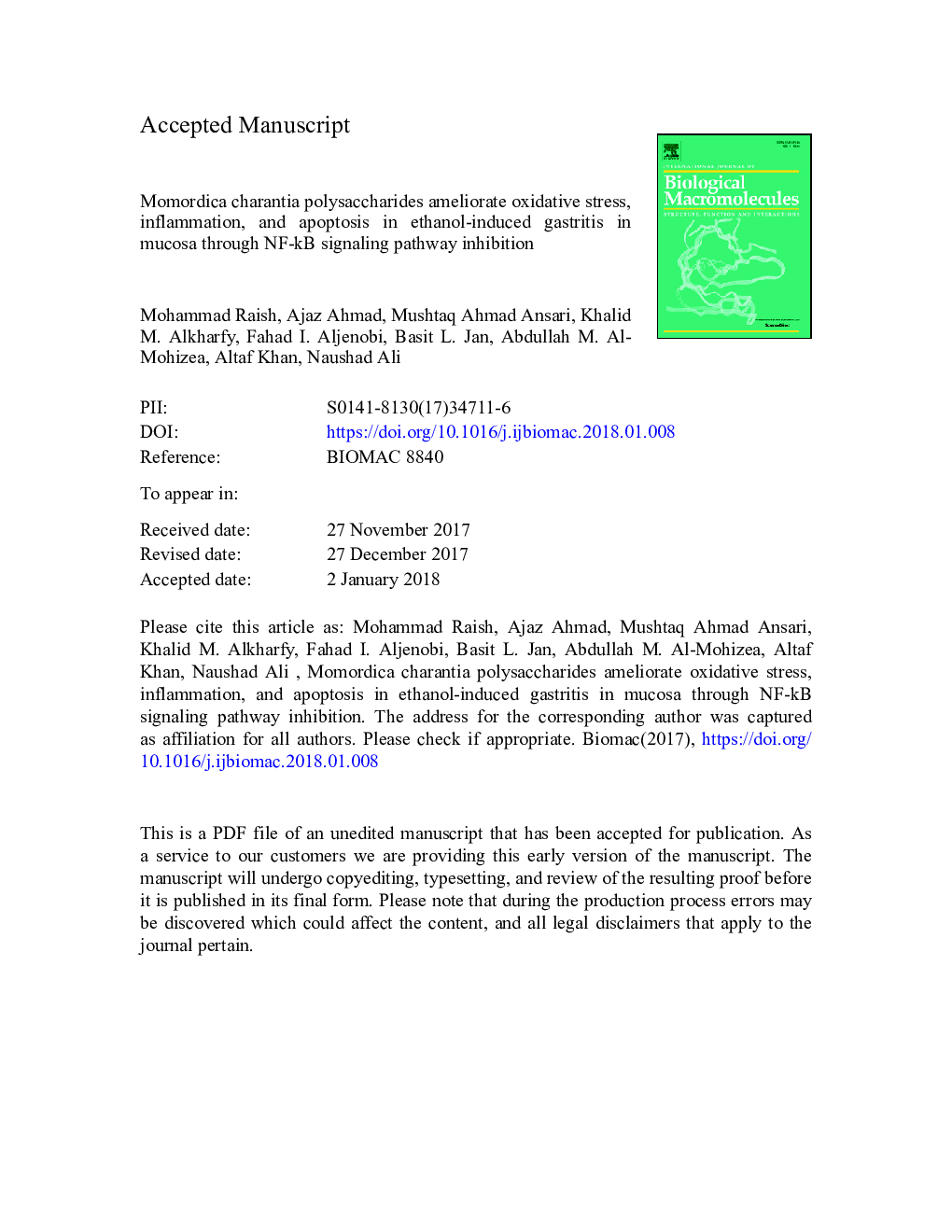| Article ID | Journal | Published Year | Pages | File Type |
|---|---|---|---|---|
| 8327780 | International Journal of Biological Macromolecules | 2018 | 25 Pages |
Abstract
This study investigated the therapeutic role of polysaccharides from M. charantia and their mechanism of action against ethanol-induced gastric ulcers in rats. Their effects were determined through macroscopic evaluation of the gastric cavity (gastric ulcer index [GUI]), changes in PGE2, lipid peroxidation (malondialdehyde), antioxidant systems (catalase and reduced glutathione), inflammatory markers (tumor necrosis factor-α [TNF-α], interleukin-6 [IL-6], and myeloperoxidase [MPO]), apoptotic markers (caspase 3, Bax, and Bcl-2), nuclear factor-κB (NF-κB [p65]), and histopathological staining (H&E and PAS). Pretreatment with MCP (300 mg/kg p.o.) attenuated the severity of ethanol-induced gastric mucosal damage, reductions in GUI, histopathologic aberrations, and neutrophil invasion, and PGE2 upregulation. These actions were similar to those of omeprazole, a reference anti-ulcer drug. MCP repressed gastric inflammation through the reduction of MPO, TNF-α, and IL-6, and prevented gastric oxidative stress through the inhibition of lipid peroxides with the concomitant enhancement of glutathione and catalase activity. Apoptotic markers indicated that MCP suppressed Bax and caspase-3 activity and enhanced the anti-apoptotic protein Bcl-2, which favored cell survival. MCP downregulated NF-κB and upregulated IκBα. Our study results suggested that the prophylactic administration of MCP reduced ethanol-induced gastric injury in rats through the suppression of gastric inflammation and oxidative stress, predominantly via NF-κB inhibition.
Related Topics
Life Sciences
Biochemistry, Genetics and Molecular Biology
Biochemistry
Authors
Mohammad Raish, Ajaz Ahmad, Mushtaq Ahmad Ansari, Khalid M. Alkharfy, Fahad I. Aljenoobi, Basit L. Jan, Abdullah M. Al-Mohizea, Altaf Khan, Naushad Ali,
